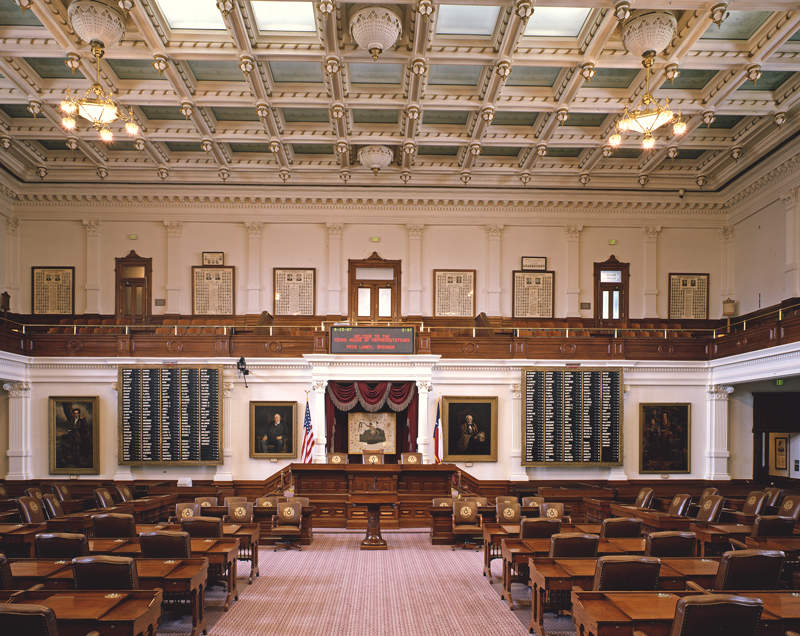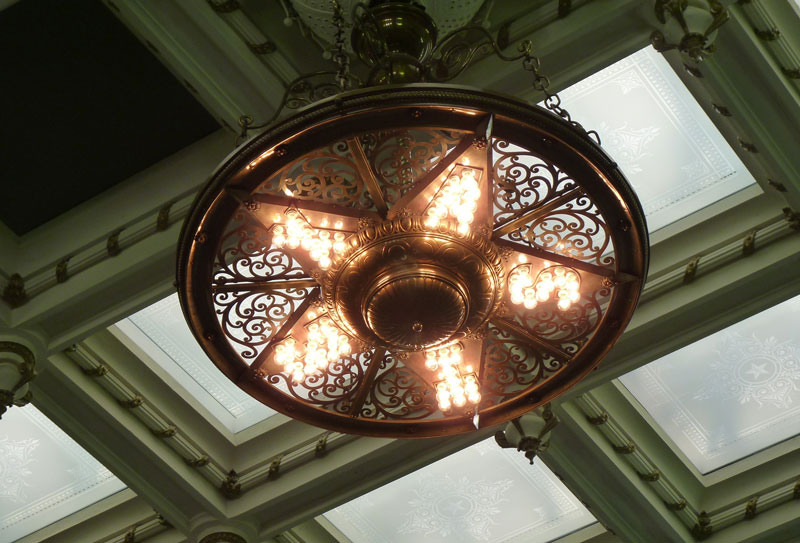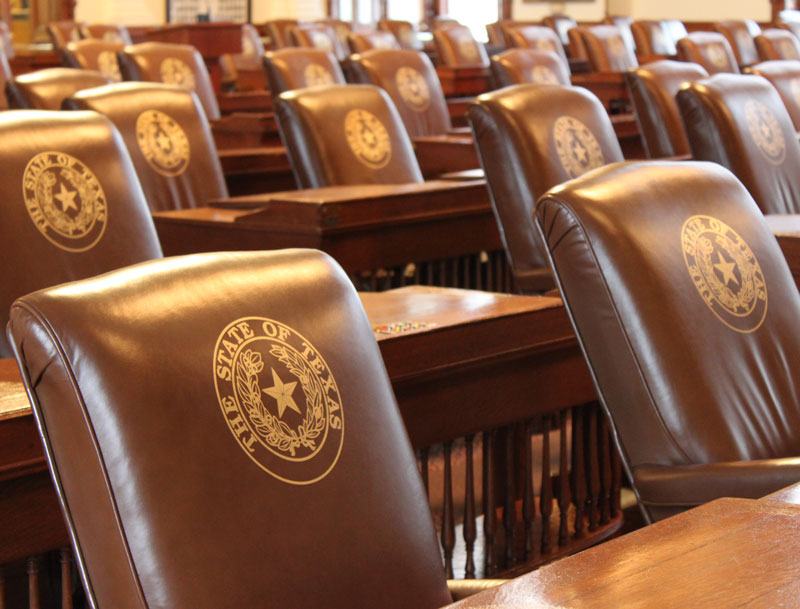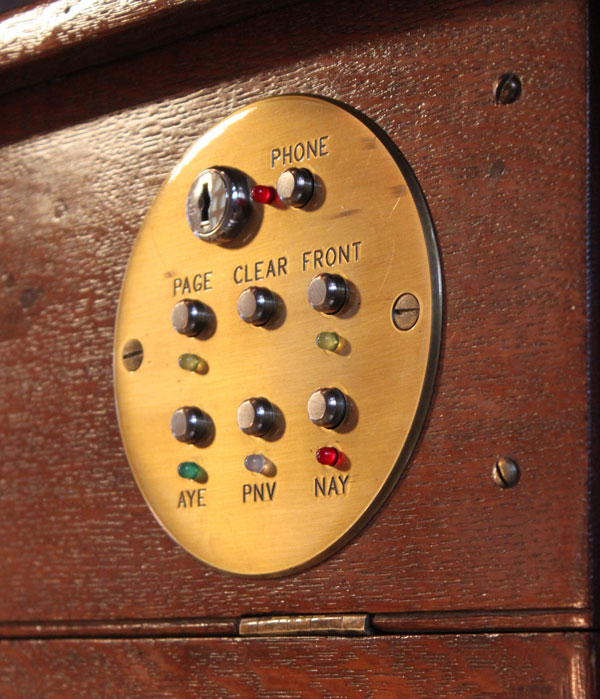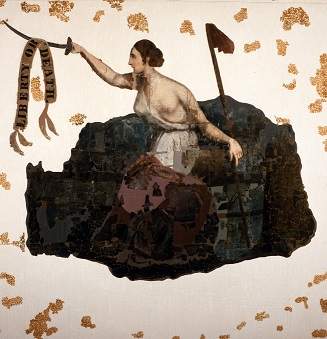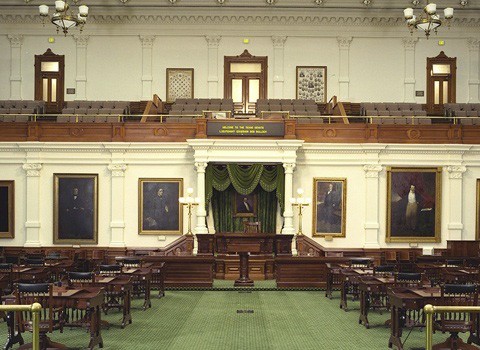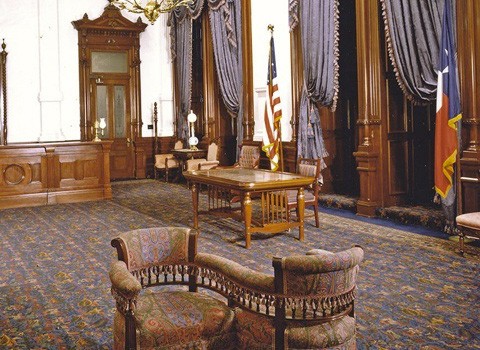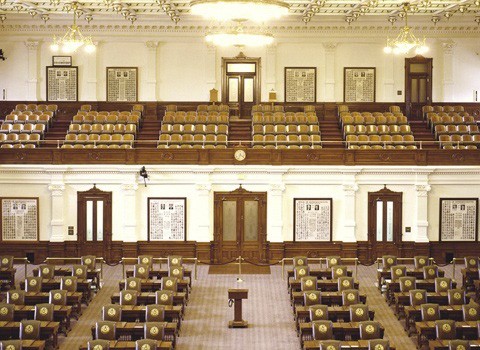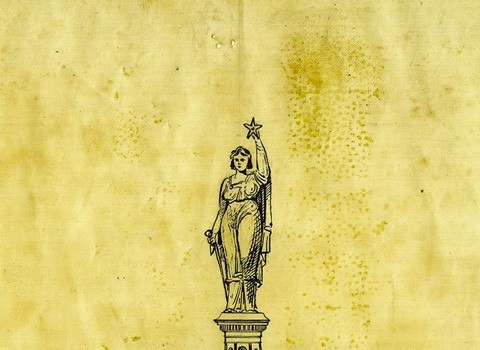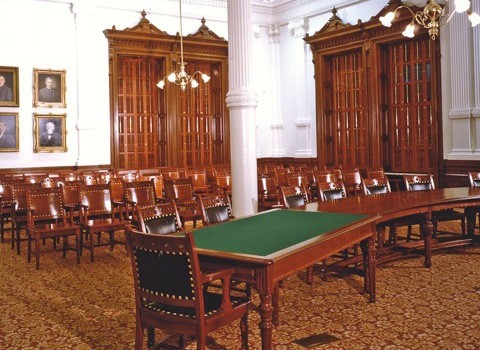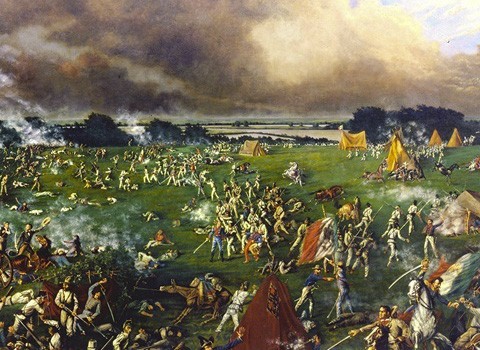House of Representatives
The largest room in the Capitol reflects the grandeur of Texas.
Every two years, 150 elected representatives from across the state gather in this chamber to participate in the privilege that is democracy. They've been doing this since 1888.
Since that time, lawmakers and visitors making their first visit to the Capitol have probably paused once inside the House chamber. It takes a moment to absorb the sheer size and magnificence of the oak-filled room. Row upon row of brown leather armchairs embossed with the State of Texas seal fill the floor while public gallery seats surround the entire space. Located in the west wing of the Capitol, the chamber has been restored to its 1909 appearance. Two of the most historic and beautiful features of the room may not be immediately apparent. Instead of looking around, you have to look up to see them.
Two large brass chandeliers suspended over the representatives' desks were custom-designed for the Capitol when permanent electric lighting was installed in 1890.
Like the other architectural details in the building, these fixtures are marvels of beauty and craftsmanship, designed to the smallest detail. But they also add a dash of glamour to the stately room. Look carefully and you'll see that the lightbulbs in each arm of the five-pointed star design are arranged to form a letter. What do the five lightbulb letters spell? TEXAS.
As in the Senate Chamber, most of the desks in this chamber were created by A.H. Andrews and Company of Chicago in the late 1800s.
The desks in the Senate are walnut, but the House desks are made of oak. Like Senate Chamber desks, House desks have also been updated to accommodate phones and laptop computers. Each representative has the pleasure of sitting in a signature Texas-seal embossed, brown leather chair made especially for this chamber in 1941. Unlike their Senate colleagues, representatives don't speak from their desks but from one of two podiums located at the front and back of the chamber.
Because of the large number of representatives, Texas was one of the first states to abandon traditional voice voting.
A mechanical voting system was installed in the House chamber in 1922. During the 1970s, that was replaced by a computerized voting system. Each representative's desk has a panel that allows push-button voting and communication. Members can vote Aye (yes), Nay (no), or PNV (present but not voting). Additional panel buttons alert members to phone calls or requests from the Speaker of the House.
The painted flag that hangs behind the desk of the Speaker of the House is a carefully conserved artifact from the Battle of San Jacinto.
On April 21, 1836, this silk flag was carried into battle by Kentucky volunteers under the command of Captain Sidney Sherman, and bore witness to the bloody fighting that resulted in a Texas victory over General Santa Anna's army and the state's independence from Mexico. The tattered battle flag was donated to the state of Texas by Sherman's descendants in 1896, restored in the 1930s, and further conserved in 1989 and 1990. To protect the fragile flag, the original is on display in the House chamber only when the legislature is in session. At other times, a replica hangs in its place.
Other artworks hanging in the House of Representatives Chamber include portraits of Stephen F. Austin, Sam Houston, Governor James S. Hogg, and other significant Texas political leaders and military heroes.
The Texas House of Representatives is composed of 150 members, each elected to a two-year term. Each representative serves approximately 181,000 Texans.
The Texas Legislature meets in regular session every two years. After the regular session is completed, special sessions can be called by the governor in order to address specific issues. The presiding officer of the House of Representatives is the Speaker of the House, who is elected by fellow legislators on the first day of every regular session.
